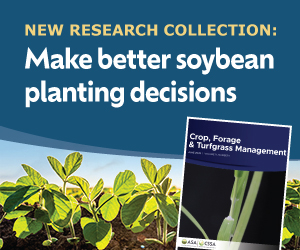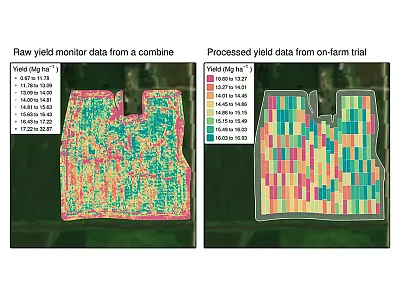Dryland continuous cropping reduces greenhouse gas emissions and enhances crop yields
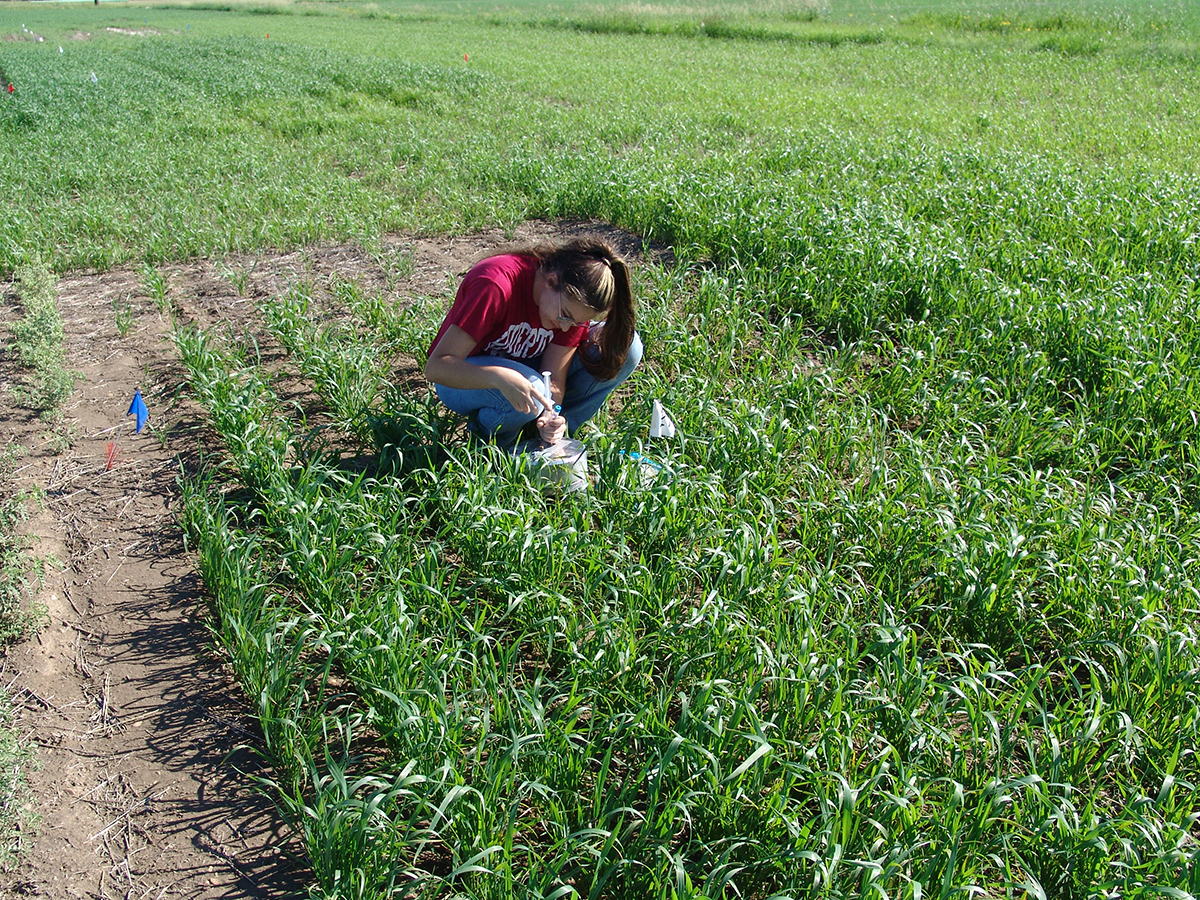
The traditional dryland cropping system in the semi-arid U.S. northern Great Plains is conventional tillage crop–fallow, which has not only reduced soil health and environmental quality, but has also decreased annualized crop yields. Improved management strategies are needed.
The agricultural sector is a significant contribution of greenhouse gas (GHG) emissions, amounting to almost 10% of the global total GHG emissions. Management practices, such as tillage, nitrogen fertilization, manure and compost applications, and cropping systems affect GHG emissions from agriculture. Increased demand for nitrogen fertilizers to enhance crop yields to feed the growing population in the coming decades can further increase GHG emissions.
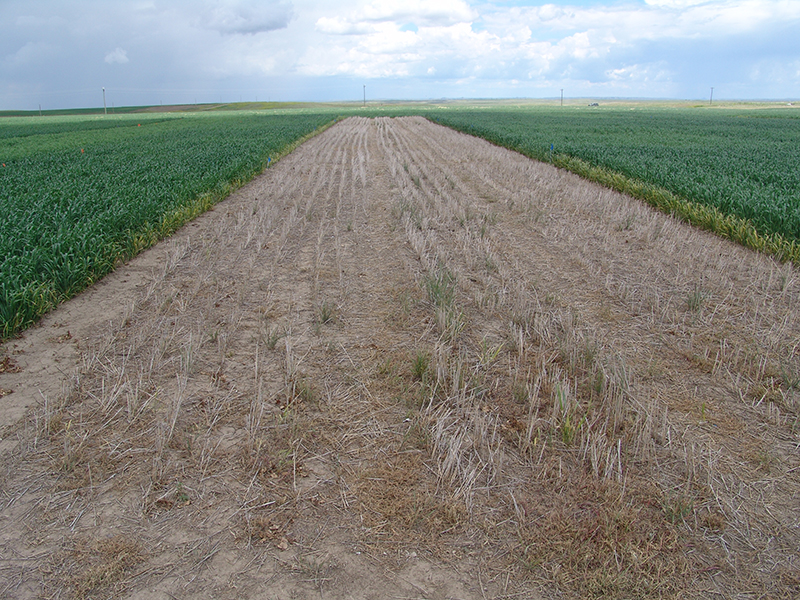
Dryland cropping systems in arid and semiarid regions cover one-third of the global agricultural production and contribute about 5% of the global GHG emissions. In the semiarid region of the U.S. northern Great Plains, dryland cropping systems cover 30% of the total agricultural land, produce 50% of the total wheat yield, and contribute less than 5% of the total GHG emissions. The traditional dryland cropping system in this region is conventional tillage crop–fallow, which has not only reduced soil health and environmental quality by reducing soil organic matter and increasing GHG emissions, but has also decreased annualized crop yields. Improved management strategies are needed to reduce GHG emissions, increase soil carbon sequestration, and sustain dryland crop yields.
Our research team at the USDA’s Agricultural Research Service in Sidney, MT examined the effect of three long-term (34 years) dryland cropping systems on GHG emissions, soil carbon sequestration, and crop yields. We measured nitrous oxide and methane emissions (GHGs) as well as spring wheat and pea yields from 2016 to 2018 and soil carbon sequestration rates from 2012 to 2019. Our objective was to determine improved cropping systems like continuous cropping, which involves growing crops annually and eliminating the summer fallow period, for reducing GHG emissions, enhancing soil carbon sequestration, and sustaining dryland crop yields in the semiarid region of the U.S. northern Great Plains.
The study revealed that no-tillage continuous spring wheat and a spring wheat–pea rotation reduced GHG emissions by 66–149%, increased soil carbon sequestration by 144–288%, and enhanced crop yields by 23–60% compared with conventional tillage spring wheat–fallow.
Although no-tillage continuous spring wheat increased soil carbon sequestration and reduced GHG emissions, crop yields were lower due to increased infestations of weeds and pests and enhanced soil acidity compared with a no-tillage spring wheat–pea rotation. As a result, we concluded that no-tillage continuous spring wheat is not a viable dryland cropping system to sustain long-term crop yields. Instead, we recommend a no-tillage spring wheat–pea cropping system to mitigate GHG emissions, enhance soil carbon sequestration, and sustain long-term crop yields in dryland cropping systems in the U.S. northern Great Plains.
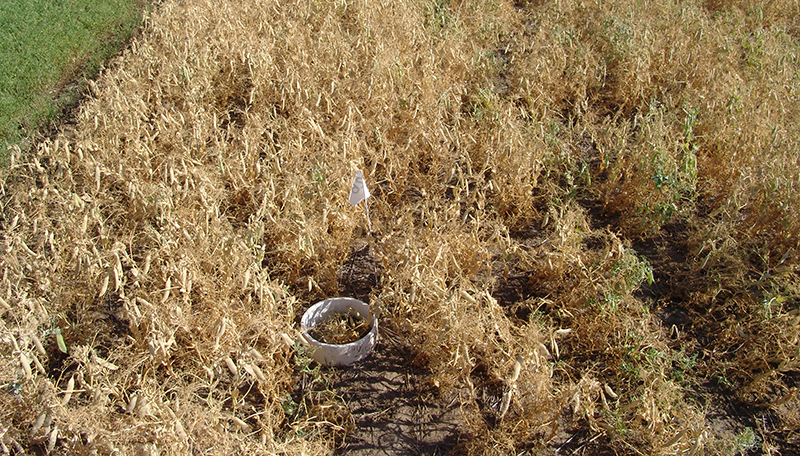
Other benefits of using a no-tillage spring wheat–pea rotation compared with no-tillage continuous spring wheat and a conventional tillage spring wheat–fallow rotation include enhanced soil fertility and health by supplying increased nitrogen from pea compared with spring wheat residue due to enhanced biological nitrogen fixation, which reduces nitrogen fertilization rates to spring wheat, and reduced weed and pest pressure.
Producers can enhance farm income by using a no-tillage spring wheat–pea rotation through enhanced crop yields, reduced energy requirement for tillage, lower crop inputs (nitrogen fertilizer, herbicides, and pesticides), increased carbon credit, and improved environmental quality compared with conventional tillage spring wheat–fallow in the semiarid region of the U.S. northern Great Plains.
Dig deeper
Sainju, U.M., Allen, B.L., & Jabro, J.D. (2023). Long-term continuous cropping reduces greenhouse gas emissions while sustaining crop yields. Journal of Environmental Quality, 53, 1073–1085. https://doi.org/10.1002/jeq2.20627
Text © . The authors. CC BY-NC-ND 4.0. Except where otherwise noted, images are subject to copyright. Any reuse without express permission from the copyright owner is prohibited.



